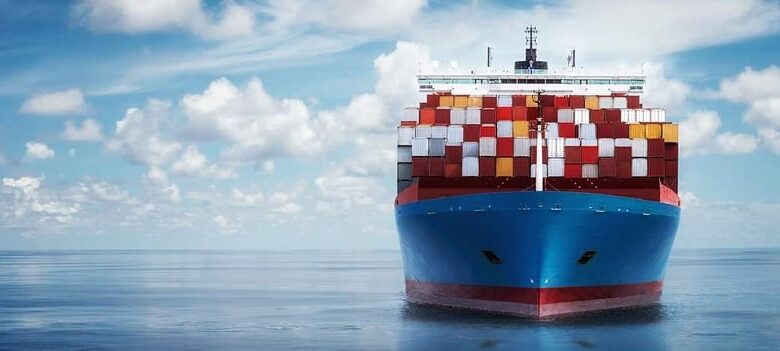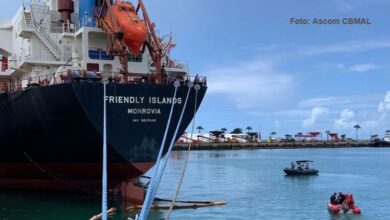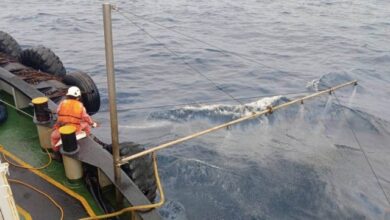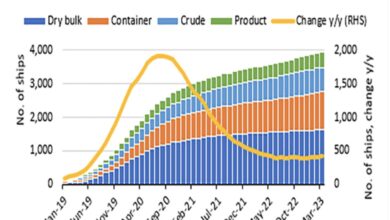
The maritime sector presently accounts for about 2.8% of all global greenhouse gases (GHG) emissions[1], mainly due to its rapid growth, its dependence on carbon-intensive bunkers, and the sheer size of its business (more than 80% of the world merchandise trade by volume is transported by sea).
However, maritime transport is also one of the economic sectors with a greater potential to reduce its GHG emissions. Establishing a roadmap to the decarbonization of the maritime sector will require a consideration of three different fundamental aspects: technology, policy, and investment in research, development and innovation.
Technology Development: Focus Areas
Technological developments will be the key towards reducing the environmental impact of the maritime sector and achieving decarbonization goals by 2050. First of all, efforts must be made towards replacing the use of fossil fuels with others of renewable origin -and development of these new fuels must be carefully guided by criteria of sustainability, from a strategic viewpoint that takes into account their whole life cycle (as some “green” fuels may in the long term be even more polluting than fossil fuels if we consider the sources of energy used for their production).
To this effect, fuels produced by electrolysis of water from renewable energies, such as e-hydrogen and e-ammonia, are currently considered to be the most sustainable options by many stakeholders.
Secondly, as a consequence of the development of new fuels, changes will be needed in the propulsion systems of ships to enable them to run on said fuels; and great economic and technological efforts will have to be made to secure adequate access to their supply at a global scale by building new infrastructures (or adapting existing ones).
Lastly, the maritime industry is working on the conceptual development and construction of ecological, zero-emission ships; and important technological efforts are also being made towards increasing the efficiency of ship engines and propellers, or the implementation of on-board energy sources, which can have a significant impact in reducing GHG emissions.
Other methods of operational efficiency such as speed reduction, proper maintenance of the ship’s hull and better planning of voyages are also key to reducing energy consumption.
International and European decarbonization policies for the shipping sector
The initial GHG strategy[2] of the International Maritime Organization (IMO) set the target for the reduction of CO2 emissions per transport work, as an average across international shipping, by at least 40% by 2030 and 70% by 2050 (both figures as compared to the data of 2008)[3].
To comply with these goals, IMO has devised a series of goal-based approach measures to reduce the carbon intensity of international shipping and encourage shipowners and operators to invest in technological, fuel-saving options.
Some of these measures are still under development and aim at long term (research and development of fossil-free fuels, for instance) and medium term solutions (such as market-based measures, emissions cap-and-trade, bunkers levies, international maritime research fund). In the short term, however, measures that introduce the following important concepts will come into effect on 1 January 2023:
Energy Efficiency Existing Ship Index (EEXI)[4]: formulated for existing vessels, this index calculates a vessel’s CO2 emissions measured in grams of CO2 per tonne-mile (gCO2 /dwt-nm) based on the installed power of the main engine, fuel-oil consumption, and a CO2 conversion factor. From 1 January 2023, all vessels must have an EEXI technical file in place.
EEXI verification shall take place at the vessel’s first annual, intermediate or renewal survey (after 1 January 2023) for its International Energy Efficiency Certificate (IEEC).
Carbon Intensity Indicator (CII)[5]: measures the energy efficiency of the vessels in grams of CO2 emitted per cargo capacity and nautical miles; and applies only for certain types of ships of 5,000GT and above engaged in international voyage of the following ships types: bulk carriers, gas carriers, tankers, container ships, general cargo ships, refrigerated cargo carriers, combination carriers, LNG carriers, vehicle carriers, Ro-Ro cargo vessels, Ro-Ro passenger vessels and cruise ships.
The CII gives an annual rating to the ships ranging from A (most efficient) to E (least efficient).
Ship Energy Efficiency Management Plan (Part III) (SEEMP)[6]: is mandatory for all vessels over 400GT and should be developed and regularly updated by shipowners. The SEEMP must include implementation of procedures to improve the energy efficiency of a ship in a cost-effective manner.
Environmental regulations at the supranational or national level also play a vital role in the reduction of GHG emissions and in the transition to a new energy model, encouraging the maritime industry to invest in new technologies and infrastructures that will facilitate access to renewable energies.
In the specific case of the European Union (EU), its initial nationally determined contribution (NDC) under the Paris Agreement was to reduce GHG emissions by at least 40% by 2030 (compared to data of 1990)[7].
In December 2020, an updated NDC was presented by the EU with a new goal for GHG reduction of at least 55% by 2030 (compared to 1990 levels)[8].
To achieve these climate targets, on 14 July 2021 the European Commission (EC) adopted a series of legislative proposals, commonly known as the “Fit for 55 package”[9].
The Fit for 55 package affects all industrial sectors, and for maritime transport it contains four particularly noteworthy proposals, which are still negotiated in the European institutions:
- The Emissions Trading System (ETS) Directive revised to include the maritime sector: Maritime transport in the EU is proposed to be subject to the ETS Directive as from 1st of January 2023, and ships currently reporting emissions under the EU’s MRV (Monitoring, Reporting and Verification) regulation would have to purchase CO2 emission credits, affecting voyages into (or out of) the EU, including stays at EU ports. Allocation of ETS allowances would account of 100% of emissions from intra-EU voyages and berth activities in EU ports and of 50% of emissions for voyages entering or leaving an EU port. Responsibility and payment of the allowances would fall on the ship’s commercial operator. There would also be a gradual phase-in period beginning with the requirement to surrender 20% of allowance for verified emissions in 2023 and rising gradually to 100% by 2025. Shipping companies failing to comply will be fined and may eventually be banned from EU waters.
- The FuelEU Maritime Regulation: Coming into effect in 2025, this proposed regulation would establish requirements to gradually reduce the GHG footprint in the life cycle of ships, in terms of energy. It would apply to the same vessels subject to the EU MRV and ETS regulations (commercial ships of 5,000 GT and above), and would take into consideration carbon dioxide, methane and nitrous oxide emissions.
- It would require a gradual improvement of GHG intensity of the energy used, from 2% by 2025 (as compared to year 2020) up to 75% by 2050 -with intermediate targets to achieve by 1 January 2030 (6%), 2035 (13%), 2040 (26%) and 2045 (59%). Credits would be granted for renewable energy generated on-board.
- The regulation would also require that, from 2030 onwards, passenger and container ships at berth will be obligated to connect to on-shore electricity supply for stays longer than two hours (with very few exceptions provided for). Shipping companies failing to comply will be fined and may eventually be banned from EU waters.
- The Alternative Fuels Infrastructure Regulation: This proposed regulation repeals an existing Directive and would require that EU member states adopt national policy frameworks to expand their refueling infrastructures, so that availability of liquefied natural gas (LNG) and hydrogen is guaranteed in all EU ports by 2025, and of shore-side electricity supply by 2030.
- The Amended Energy Taxation Directive 2003/96/EC: An update to the existing EU Framework on taxation of energy products is under negotiation and provides that bunker fuel sold in the EU for intra-EU waterborne navigation will be taxed.
- The bunker fuel for extra-EU waterborne navigation could remain tax-free according to the discretion of the member state. Sustainable and alternative fuels will be exempt from tax for a period of ten years.
Legislative proposals from the EU are considered complementary to the global regulatory framework; however, it is important to ensure that said legislative proposals are not in conflict with the international objectives reflected in the amendments to MARPOL Annex VI adopted by IMO to reduce the carbon intensity of maritime transport.
The inclusion of maritime transport in the European CO2 emissions system could lead to a transfer of interoceanic transshipment scales to neighboring ports outside of the EU in order to pay lower taxes on their emissions in route, thereby reducing the competitiveness of maritime transport in the EU compared to other modes of transport and creating environmental havens outside the EU.
Similarly, investing large sums of money on standardized targets for all EU ports as per the Alternative Fuels Infrastructure Regulation may lead to the creation of under-utilized infrastructures and therefore prove inefficient.
Investment in Research, Development, and Innovation
In order to achieve the “4th industry revolution” in shipping and a better coupling of the maritime transport and energy sectors, investment in research, development and innovation must be scaled up significantly.
Technological innovation is crucial to facilitate an energy transition in the shipping industry, which requires large investments on the part of manufacturers, suppliers, power and fuel producers, and other stakeholders.
Subsidies and loans will also be essential to support the implementation of alternative fuel distribution infrastructures.
Low-carbon targets and cleaner energy paths can be achieved by investing in, renewable energy alternatives, low-carbon technologies and energy efficiency measures.
To summarize, maritime transport plays a critical role in the global trade and economy and its importance will tend to grow in the coming years; but this will result in an increase in its energy consumption which, under the current energy paradigm based on fossil fuels, would set back the GHG reduction goals established by IMO, the EU and others. International and European institutions must act collaboratively to ensure that efforts are made towards the reduction in emissions of GHGs, and to grant access to renewable energies for all parties concerned; as a part of the path to a sustainable and environmentally-friendly economy and society.
[1] Faber, J. et al. (2021), Fourth IMO GHG Study 2020, International Maritime Organization (IMO).
[2] A revision of the Initial IMO Reduction Strategy is currently underway.
[3] IMO (2018) Adoption of the initial IMO strategy on reduction of GHG emissions from ships and existing IMO. activity related to reducing GHG emissions in the shipping sector.
[4] MARPOL Annex VI, Chapter 4 Regulation 23 and 25.
[5] MARPOL Annex VI, Chapter 4 Regulation 28.
[6] MARPOL Annex VI, Chapter 4 Regulation 26.
[7] EU (2015) Intended Nationally Determined Contribution of the EU and its Member States.
[8] EU (2020) The update of the nationally determined contribution of the European Union and its Member States.
[9] Council of the EU and the European Council (2021) https://www.consilium.europa.eu/en/policies/green-deal/fit-for-55-the-e…
Author:
Estela MORANTE | Shipping Operations Expert – Dry Bulk Operations Focus on Shipping Decarbonization













